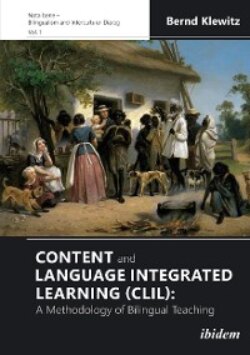Читать книгу Content and Language Integrated Learning (CLIL): A Methodology of Bilingual Teaching - Bernd Klewitz - Страница 6
1.1 Dismantling Myths and Legends of Bilingualism
ОглавлениеFollowing a wider definition of the term bilingualism as “the use of more than one language in daily life” (Meisel 2019: 2), it is far more common than practicing one language only, so we can safely say that “the majority of the world’s population is bilingual” (ibid.: 3). But apart from a certain ambiguity the term bilingualism1 refers to a variety of contexts and diverse situations where the exposure to more than one language is inevitable—including labor migration as well as minority languages in multi-ethnic societies, but also deliberate parent-decisions to foster language learning. As a result, simultaneous or successive bilingualism will eventuate, depending on existing motivation and societal conditions or pressures. In predominantly monolingual environments parents might consider bilingualism as an advantage for their children and encourage the use of more than one language in their families.
The latter is the case in the aforementioned family from Southern Germany where according to the parents “to go bilingual” was a process-driven decision due to their previous stays abroad in Anglophone countries for a longer period of time. Peter, in particular, refers to his experience that addressing his children in English allows him to communicate with them in a more reflective manner. In other words, in situations where he would normally have reacted more emotionally or even sternly he would take a moment to consider what to say as a kind of inner translation, sometimes even looking for the right expression. Reflecting first what he was going to say would create some space for consideration, if only just for a couple of seconds. As he was, in part, brought up in English speaking countries and attended schools there, he also developed a very emotional relationship with the English language. He thought this might help him to better express his feelings and convey emotions in a more authentic manner to his children.
What started as an experiment four years ago developed into a way to create a special relationship within his family, hoping that his love of another language would take root in his children and allowing for intimate communication without excluding other family members. Also, and not the least part of his motivation, was the chance to pass on a perspective of daily life and routines that would open another door to the world. Ava and Paul, hopefully developing simultaneous bilingualism, could be given better opportunities to travel the world and work in different countries later on. And last but not least, Peter enjoys this language experience thus creating an intrinsic motivation to continue speaking English to his children.
In reflecting this ongoing process from his children’s point of view, the feedback he gets from his older daughter Ava is overall positive in that she can safely differentiate between the two languages, accept that there is one person, one language (later on to be referred as the OPOL principle, see 1.6) and that her comprehension of two languages is getting on very well. She enjoys, for instance, listening to English children’s books read to her and nursery rhymes and already knows a number of English songs by heart. Opening windows into another culture are thought by both parents to be a tremendous advantage.
